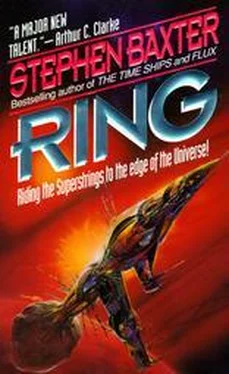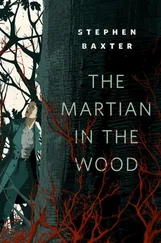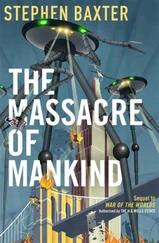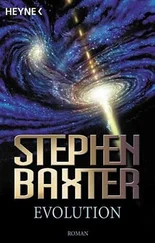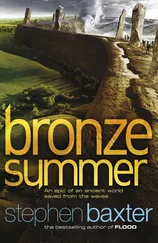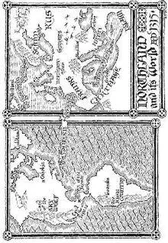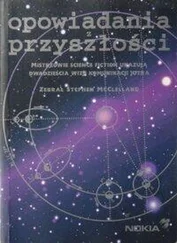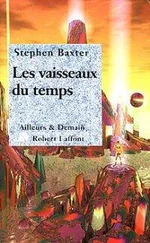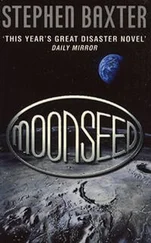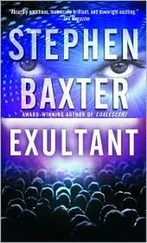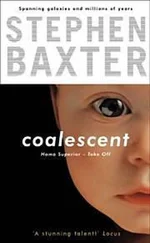“In fact,” Mark said, “the star we’ve chosen — New Sol — is already well past its middle age. It’s probably got no more than three-quarters of a million years of its life left.”
Spinner frowned. “That seems stupid. Why not choose a young star, and move there while we can? It may be that when New Sol dies we won’t be able to move away.”
“No,” Mark said patiently. “Spinner, we need an older star.”
The star called New Sol was nearing the end of the second phase of its existence. In the first, it had burned hydrogen into helium. Now, helium was fusing in turn, and a rain of more complex elements had formed a new, inner core: principally oxygen, but also neon, silicon, carbon, magnesium and others.
And later, in the third phase of its life, when the oxygen started to burn, the star would die… although how was far from certain.
“Terrific,” Spinner said. “And we die with it.”
“No,” Mark said seriously. “Spinner-of-Rope, we die without it. Don’t you get it? New Sol is full of oxygen…”
Morrow was pointing, excitedly. “Look. Look. There’s the wormhole… I think it’s almost time.”
Louise turned in her seat.
Now a new form emerged over the rotating pod’s horizon: the familiar shape of a wormhole Interface. This Interface was only a hundred yards across — far smaller than the mile-wide monster the Northern had hauled across a different spacetime — but, like its grander cousins of the past, it shared the classic tetrahedral frame, the shining electric blue color of its exotic matter struts, and the autumn-gold glimmering of its faces. A dozen drone scoop-ships prowled around the Interface, patient, waiting.
Louise felt a prickle of tears in her eyes; she brushed them away impatiently. Already, she thought, we are building things here. Already, we are engineering this universe.
Mark said to Spinner, “If there were planets here we could land and try to terraform one. But there are no planets for us to land on. Anywhere. This is a very young universe. There are no more than traces of heavy elements here, anywhere, outside the interior of the protostars. There are no moons, no comets, no asteroids… We have no raw materials to build with, save the hulk of the Northern — save what we brought here ourselves. We can’t even renew our atmosphere.”
Morrow nodded. “So,” he said, “we’re mining the star.”
The second terminus of this wormhole had been dropped into the carcass of New Sol. Lieserl had accompanied the Interface — just as once she had traveled into the heart of Sol itself. Soon, enriched gases from the heart of the new star would pour into space — here, far from the heat of New Sol, accessible.
The scoop-ships had mouths constructed of electromagnetic fields which could gather in the star-dust across volumes of millions of cubic miles. When the wormhole started to operate, the scoops would sift out the few grains of precious heavy elements.
“The first priority is atmospheric gases,” Mark said. “We lost a lot of our recyclable reserve during the string impact. Another blow-out like that and we’d be finished.”
“Are all the gases we need there, inside the star?”
“Well, there’s plenty of oxygen, Spinner,” Louise said. “But that’s not enough. An all-oxygen atmosphere isn’t particularly stable — it’s too inflammable. We need a neutral buffer gas, to contribute to the hundreds of millibars of pressure we need to stay alive.”
“Like nitrogen,” Spinner said.
“Yes. But there isn’t much nitrogen in New Sol. We should be able to use neon, though…”
“We can replace our other stores. Use the oxygen to make water and food.”
“We can do more than that, Spinner-of-Rope,” Mark said. “In the longer term we can extract heavier elements: magnesium, silicon, carbon — maybe even iron. They are only present in traces in New Sol, but they’re there. We can build a fleet of Northerns, if we’re patient enough. Why, we can even make rocks.”
Spinner looked out at New Sol, and the point light glittered in her eyes, making her look very young, Louise thought. Spinner said, “It’s chilling to think that — except maybe for the Xeelee — we’re alone here, in this universe. Stars like this once burned in our Universe — but they were all extinguished, destroyed, long before humans became conscious.
“We may survive for millions of years here. But, finally, we’ll be gone. New Sol, and all these other stars, will destroy themselves. Eventually, a new generation of stars will form in the enriched galaxies — stars like Sol. And, I guess, intelligence will arise here…
“But not for billions of years after we’re gone.”
Spinner turned to Louise, her eyes large, her expression fragile, troubled. Her hands tugged at each other’s fingers, and played with the arrow-head pendant at her chest. “Louise, nothing we build could survive such a length of time. No conceivable monument, or record, could persist. We’ll be forgotten. No one will ever know we were here.”
Louise reached over the back of her chair and took Spinner’s hands in hers, stilling their nervous motions. Again she felt a surge of responsibility for Spinner’s fragile state. “That’s not true, Spinner,” she said gently. “We’ll still be there. These VMOs will leave traces in the microwave background — peaks of energy against the smooth radiation curves. There were traces like that in the microwave spectrum of our own Universe — that’s how we know of our own primordial VMOs. And there will be other traces, relics of this time. These giant proto-stars will enrich the substance of the young galaxies here, with heavy elements. Without the heavy elements stars like old Sol could never form… and we’ll be part of that enrichment, Spinner-of-Rope, tiny traces, atoms which formed in a different universe.”
Spinner-of-Rope frowned. “A blip in the microwave background? Is that to be our final monument?”
“It might be sufficient to let the people of the future work out that we were here, perhaps. And besides, we might have a billion years ahead of us, Spinner. Time enough to think of something.” She stroked Spinner’s hands. “It would take a long time, but we could build a planet for ourselves, out here on the lip of New Sol’s gravity well.” She smiled. Maybe they could construct an ocean, wide enough for the Great Britain to sail again. What would old Isambard have made of that? And -
“No,” Morrow said mildly.
Louise turned to him, surprised. His face, gaunt, shaven of hair, was smooth and confident-looking in the light of New Sol.
“What did you say?” Louise asked.
He turned to her. “Planets are inefficient, Louise. Oh, they’re convenient platforms if they exist already. But — to build a planet? Why bury all that painfully extracted matter inside your habitable surface?”
Louise found herself frowning; she was aware of Mark grinning at her, irritatingly. “But what’s the alternative?”
Morrow said, “We can build structures in space: rings, hollow spheres — the point is to maximize the habitable surface available for a given mass — to spread it out as much as possible. Louise, a spherical planet gives you a minimum surface for a given mass.”
Louise studied Morrow curiously. His motion sickness was still evident in the pallor of his thin face, but he spoke with a vigor, a clarity she wouldn’t have believed possible when she’d first met him, soon after his emergence from the Decks. Was it possible that the centuries of oppression, of body and soul, which he had endured in there, were at last beginning to lift?
Читать дальше
